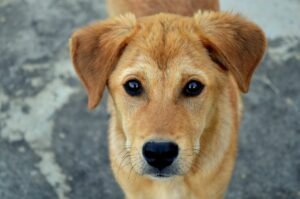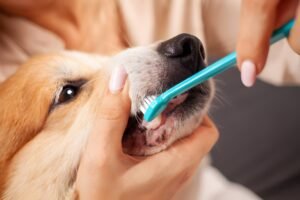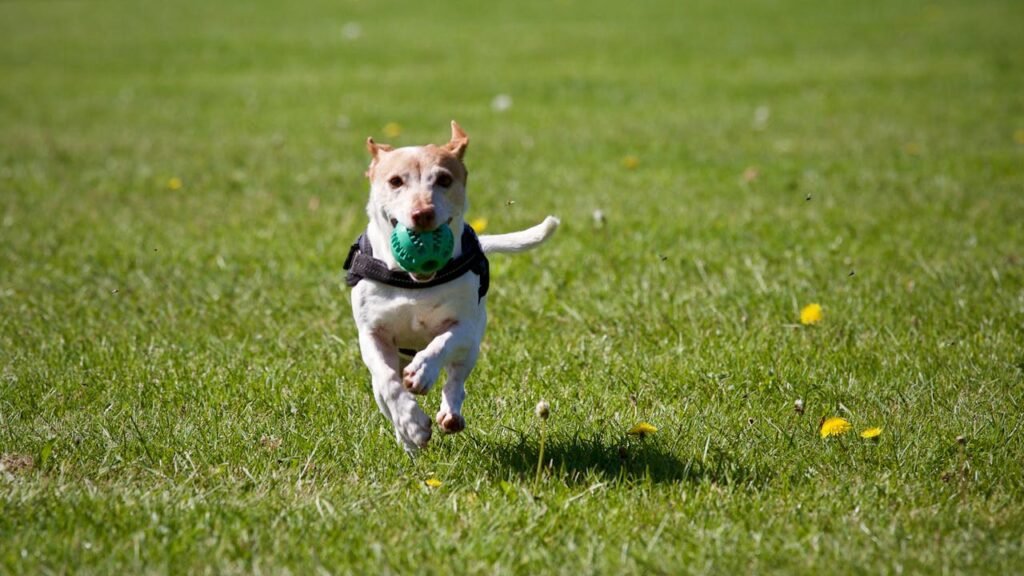Your dog looks to you to maintain their well-being. Your pet will stay in peak condition with a balanced diet of healthful dog food, frequent exercise, regular dog grooming, and regular trips to the veterinarian. However, knowing how to maintain a dog healthy necessitates routine upkeep and attention.
You must become familiar with your dog’s eating, drinking, sleeping, and other habits because occasionally, a change in these behaviors may be a sign that your dog isn’t feeling well. Consult your veterinarian for guidance on preventative and medical treatment. It’s wise to consult a veterinarian if you believe your dog is ill or injured. Dog pet insurance could be useful in covering some costs associated with canine medical care.
Indications of Optimal Dog Health-How to Keep a Dog Healthy
Dog Skin Conditions

Smooth and flexible, free of white flakes, growths, scabs, or red spots, is the hallmark of healthy skin. Depending on the breed, dog skin can have a variety of colors, from light pink to brown or black. Whether the dog has a solid coat or spots, spotty skin is typical.
Examine your dog for external dog parasites such as lice, ticks, and fleas. This can be achieved by gently blowing on your dog’s stomach or gently brushing their hair backward in a few spots to check if any tiny particles flee or if ticks are adhering to the skin. If your dog has black “dirt” on his bedding or skin, it could be flea droppings. Additionally, keep a look out for flea bites on your dog.
Dog Coat Health
Whether it’s long or short, a healthy dog coat is silky and lustrous. If you notice bald patches, excessive oiliness, or dog dandruff, consult your veterinarian.
Dog Eye Conditions

Dog eyes in good health are glossy and brilliant. Although mucus and watery tears are common, a healthy dog probably won’t excrete much fluid, and what little does come out will probably be transparent. To ensure that your dog does not have an eye infection, you should watch out for any swelling, inflammation, or yellow discharge on the pink lining of the eyelids.
Outside headshot of an Alaskan Klee Kai with varicolored eyes.
The light membrane that covers your dog’s third eyelid occasionally protrudes from the inside corner of an eye. As the dog drifts off to sleep, the eyelid may gradually rise to hide the eye. If your dog’s eyelashes start to brush against their eyes or if the whites of their eyes become yellow, it’s a good idea to call your veterinarian.
Dog Hearing Health
The inner skin of your dog’s ears should be clean and light pink. A significant amount of wax or crust is odd, even though there may be some yellow or brownish wax present.
Your dog may shake their head or scratch their ears a lot, or there may be redness or swelling inside the ear if they have an ear infection. Dogs with long, drooping ears might require more care to keep the inside and outside of the ears dry and clean.
Dog Nose Health

Typically, a dog’s nose is damp and chilly. Depending on the breed, it can be either self-colored (the same color as the coat), black, or pink. If you notice any discharge coming from your dog’s nose that is thick, frothy, foul-smelling, yellowish, or not clear, speak with your veterinarian.
A dog may or may not be healthy based on their nose; a dry, warm nose does not always indicate illness. A pet thermometer is a better tool to use when determining whether your dog is ill.
Canine Dental Health

Like the dog’s skin, healthy gums are hard and may be pink, black, or speckled. Dogs’ white, straight teeth are smooth and brown with age. Depending on the breed, adults have about 42 permanent teeth while puppies have 23 baby teeth. Baby teeth are forced out of the mouth as adult teeth erupt.
Gently speak to your dog before placing your hand over their muzzle and lifting the sides of their mouth to inspect their mouth. Verify that adult teeth are erupting properly and that baby teeth aren’t crowding them out. Verify that the breath does not smell bad and that the gums are in good shape. Seek either hard white, yellow, or brown matter or soft white matter. Plaque, also known as tartar, can be removed using a dog toothbrush and dog toothpaste.
A Rottweiler outside having its teeth brushed
Dogs that have oral infections run the risk of developing major issues with their gums and other bodily tissues, including the heart. Therefore, it’s crucial to ensure that your dog’s mouth and teeth are clean and in good condition, too
Assessing the Temperature of Your Dog
A dog’s typical body temperature ranges from 38.3 to 39.2 degrees Celsius, or 101 to 102.5 degrees Fahrenheit. You will need a rectal dog thermometer to take your dog’s temperature. Apply a thin layer of petroleum jelly to the thermometer’s bulb. While you lift your dog’s tail and stick the thermometer about an inch or so into their rectum, ask someone to support their head. Hold onto the thermometer tightly. Gently remove after taking a temperature reading. Hold it in.
Canine Heart and Pulse in Good Health
Dogs have different heartbeats due to their vast range of sizes. A dog’s heart beats normally between 50 to 130 times per minute when it is at rest. Puppies and little dogs have faster heartbeats, while healthy large dogs have slower heartbeats.
Put your fingertips over your dog’s left side of the chest, where the strongest heartbeat is, to check the heartbeat. Gently press on the inside of the top of the hind leg to check the pulse, which beats at the same speed as the heart. It’s easy to detect the pulse there because there’s an artery and the skin is thin.
Good Dog Poop and Urine
A dog may be in good health if it is urinating clear, yellow urine. If they are urinating more or less than usual, you might want to give the veterinarian a call.
The majority of mature canines urinate once or twice a day. Poop from a healthy dog is often solid and brown. You might want to contact the veterinarian if your pet is having trouble urinating, has runny or watery dog feces (similar to doggie diarrhea), or passes bloody dog excrement.
Ideal Dog Weight
The goal of maintaining a healthy canine weight is to strike a balance between exercise and nutrition. Even with a healthy diet and regular exercise, a dog may nevertheless appear overweight or underweight if there is an underlying medical issue. Giving your dog an excessive amount of food or treats is a good idea because obese canines might have major health issues.
Senior longhaired Dachshund who is obese at home.
Feeling your dog’s rib cage area is the greatest way to determine if they are overweight. Without much cushioning, you should be able to feel the ribs beneath the skin’s surface. A healthy Saluki will feel different than a healthy Basset Hound, for example, because various breeds have distinct body forms. You can examine a breed weight chart or speak with your veterinarian and breeder if you’re not sure if your dog is overweight.
Vaccinations for dogs
Dogs can contract dangerous and occasionally fatal diseases such as canine distemper, parvovirus, hepatitis, leptospirosis, and rabies by receiving regular vaccines from their veterinarian. Kennel cough, a respiratory ailment that afflicts young puppies and dogs exposed to a lot of other dogs, can also be prevented with a vaccination.
When your puppy is five or six weeks old, your veterinarian will probably give them their first vaccinations. Up until the puppy reaches 16 weeks of age, these puppy vaccines will be administered over a few weeks. The protection your dog will require after that is provided by routine booster vaccinations. To guarantee immunization, make sure you follow the regimen your veterinarian prescribes.
When to Contact the Vet
If your dog exhibits any strange behavior, including the following symptoms, you should contact your veterinarian:
Dogs that vomit, have diarrhea or urinate excessively for longer than twelve hours
Losing consciousness
stumbling, losing equilibrium, or falling
Constipation or difficulty urinating in dogs
runny nose or eyes
Frequently picking at one’s ears or eyes
thick fluid coming from sores, ears, eyes, or nose
Canine sneezing or coughing
breathing difficulties
enduring longer than normal periods of panting
shivering
Whining without any evident cause
If your dog hasn’t eaten in a day or more,
Loss of weight
significant increase in appetite lasting at least 24 hours
An increase in agitation
Oversleeping or unusually low activity levels
Limping, clutching, or shielding a body part Extreme thirst and water consumption
White Gums
